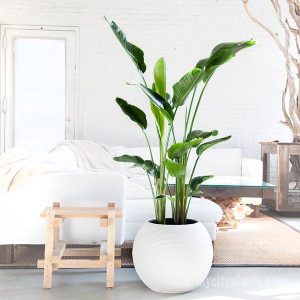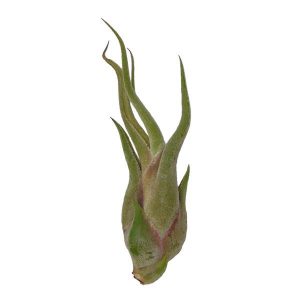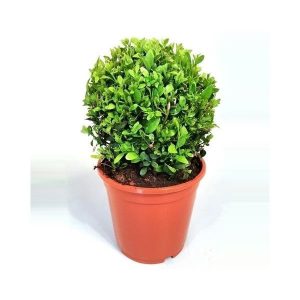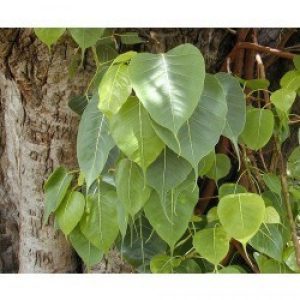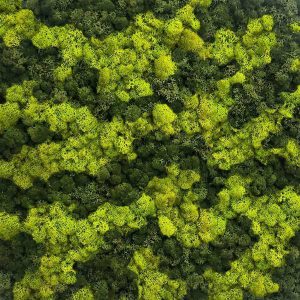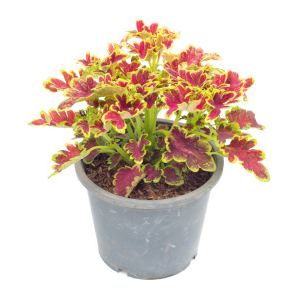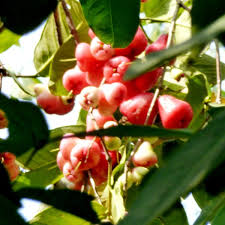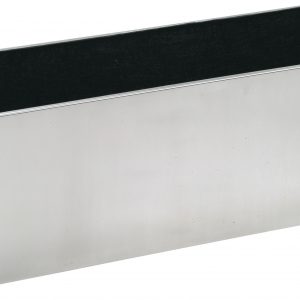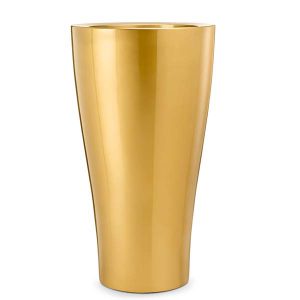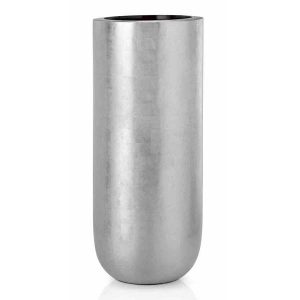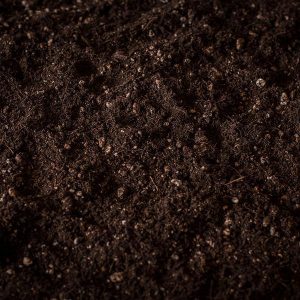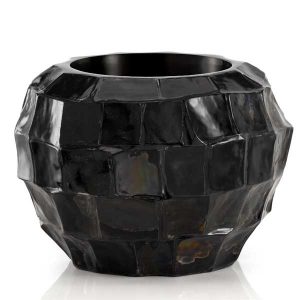Bird of paradise
Since birds of paradise are tropical plants, it’s no surprise that they enjoy bright sunlight. Place your indoor bird of paradise in a spot where it will get the most light. The only exception is if it’s very hot, such as in a sun room; in that case, bright, indirect light is best. If your plant’s leaves are yellowing, try increasing the amount of light exposure.
Birds of paradise prefer rich, well-draining soil that still retains some moisture.
Birds of paradise do best with a regular watering schedule. Keep the soil moist in spring and summer, during the growing season, but allow the soil to dry between waterings in the dormant fall and winter months.
Water that has a high salt content could burn the leaves. If this is the case with your water, consider using rain water, when possible, or distilled water to water your bird of paradise. Birds of paradise do well in typical household humidity, but they may benefit from intermittent misting during dryer winter months.
AED 50.00Read more
Tillandsia caput – medusae (Air plant)
Anyone who dares to adapt to its unconventional attitude, will easily meet the few requirements of this tillandsia, even as a debutant to hobby gardening. This care guide explains practically all the relevant details from the ideal location to the correct way of tying up, watering properly, fertilizing, overwintering and propagating.
Its distinctive characteristics include the fact that a Tillandsia caput-medusae acts as an ant plant in the wild. This does not mean that ants support its propagation by transporting seeds. In point of fact, the Tillandsia establishes a symbiotic cohabitation with ants by offering them a place of retreat. In return, the insects make a contribution to care by repelling pests and providing a natural fertilizer by the means of their faces.
AED 40.00Read more
Buxus sempervirens
This widely used genus is prized for its evergreen foliage and its ability to withstand heavy pruning. The yellow-green flowers are insignificant. Buxus has been used in hedging, topiaries, and parterres for centuries.
Noteworthy CharacteristicsOpposite, glossy rounded to lance-shaped leathery leaves. Variegated forms exist.
CareGrow in any soil, preferably in part shade. Tolerates full sun if the soil is moist. Prune in late spring and summer; supply fertilizer after any heavy pruning to aid in regeneration.
PropagationRoot semi-ripe cutttings in summer. Graft in winter.
AED 370.00Add to cart
ficus religiosa
Grow bodhi trees outdoors in the garden in areas with little or no frost. The National Taiwan University reports that bodhi trees will not survive minimum winter temperatures below 50 degrees Fahrenheit while the Missouri Botanical Garden website states that they are hardy down to 30 degrees F.
AED 0.00Read more
Rindeer moss (Preserved)
Provide your reindeer moss with good quality air. Reindeer moss does not grow roots, and draws minimal nourishment from host plants like trees. It depends on the air for almost all of its nutrients, and will not sustain itself in highly polluted areas.
Avoid allowing animals to nibble at your reindeer moss. Reindeer moss is a slow-growing lichen species that can take up to 30 years to regrow if the top layer is damaged.
plectranthus scutellariodes
But what is coleus? Sometimes called painted nettle, they are multi-hued, stunning plants grown for their leaves rather than flowers. Excellent for either container gardening or for adoring garden beds, they offer amazing color in partial shaded areas.
Other related species of coleus are used abroad as culinary herbs, medicines, or even for their edible tubers. I’ll briefly touch on a few of those too because they’re interesting, but there’s plenty to see just with Plectranthus scutellarioides.
Hundreds of ornamental coleus cultivars are available, and no two are identical, so let’s get started!
Water apple (syzygium samarangense)
Water apple is a tropical fruit plant that comes from Southeast Asia, are found in Indonesia and Malaysia. The name used to refer to the water apple two plants have different species, namely aqueum and Syzygium samarangense. Both of these plants have the shape of the tree and fruit are similar, it is difficult to distinguish.
AED 125.00Add to cart
Peat Moss
Peat moss first became available to gardeners in the mid-1900s, and since then it has revolutionized the way we grow plants. It has a remarkable ability to manage water efficiently and hold on to nutrients that would otherwise leach out of the soil. While performing these amazing tasks, it also improves the texture and consistency of the soil. Keep reading to learn more about peat moss uses.
AED 140.00Add to cart

